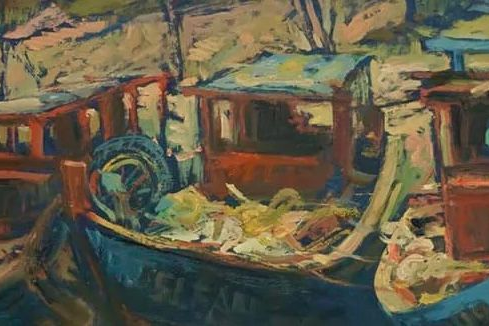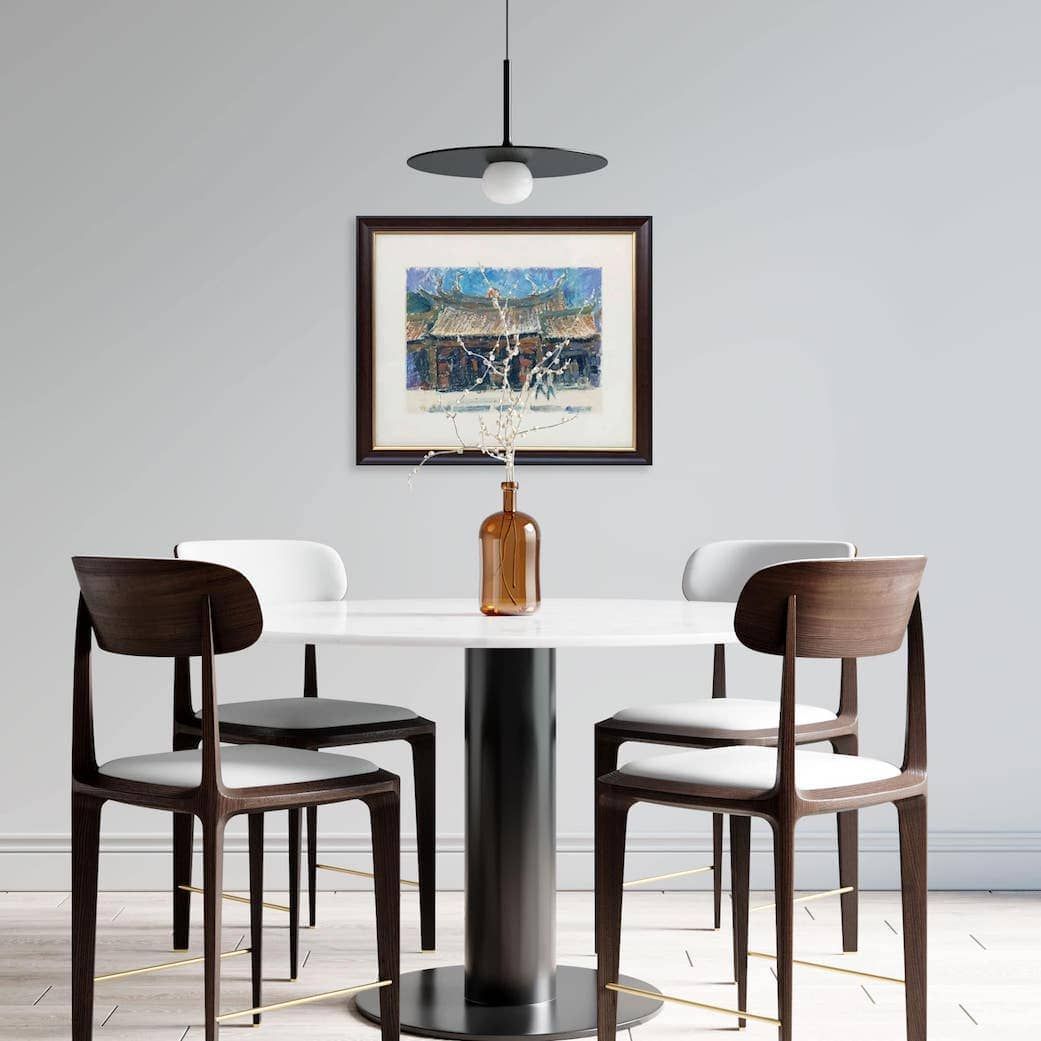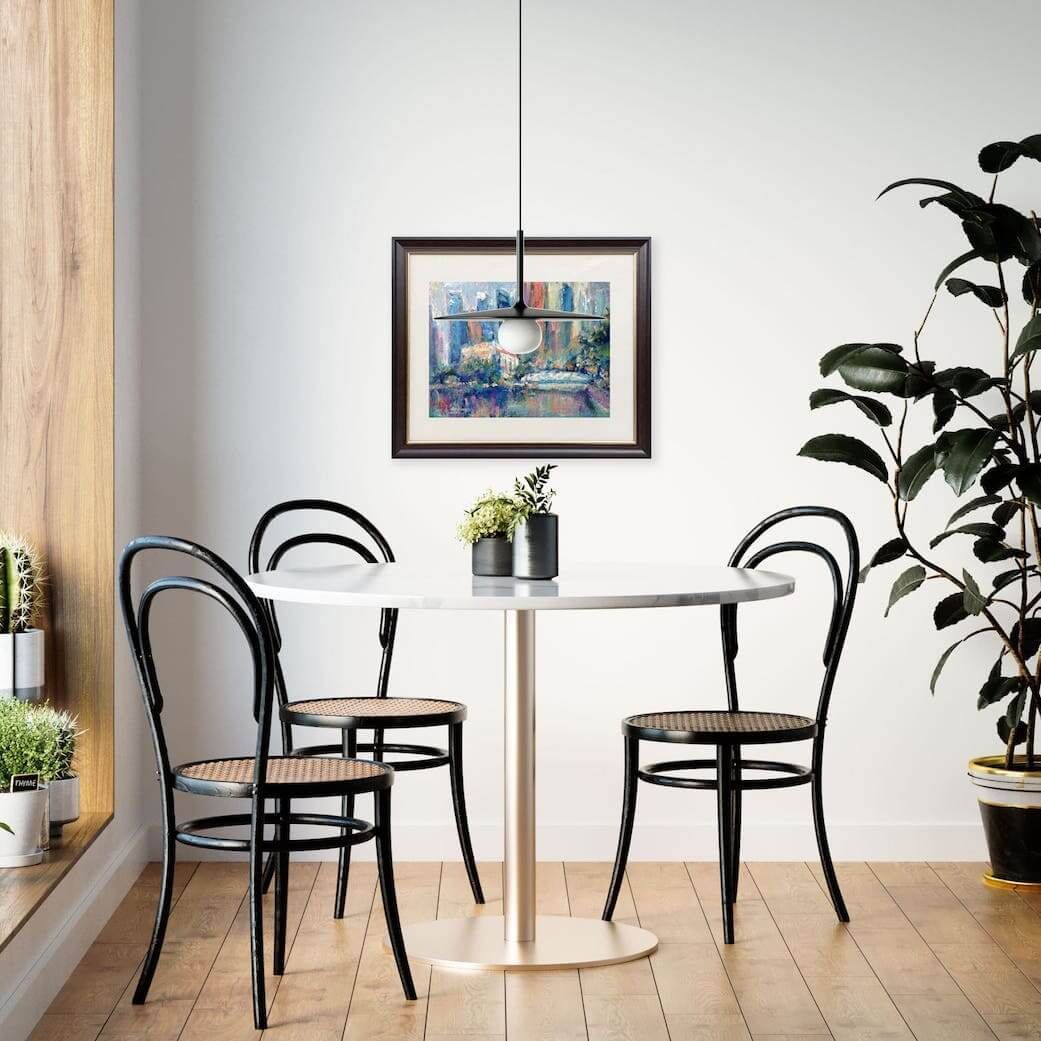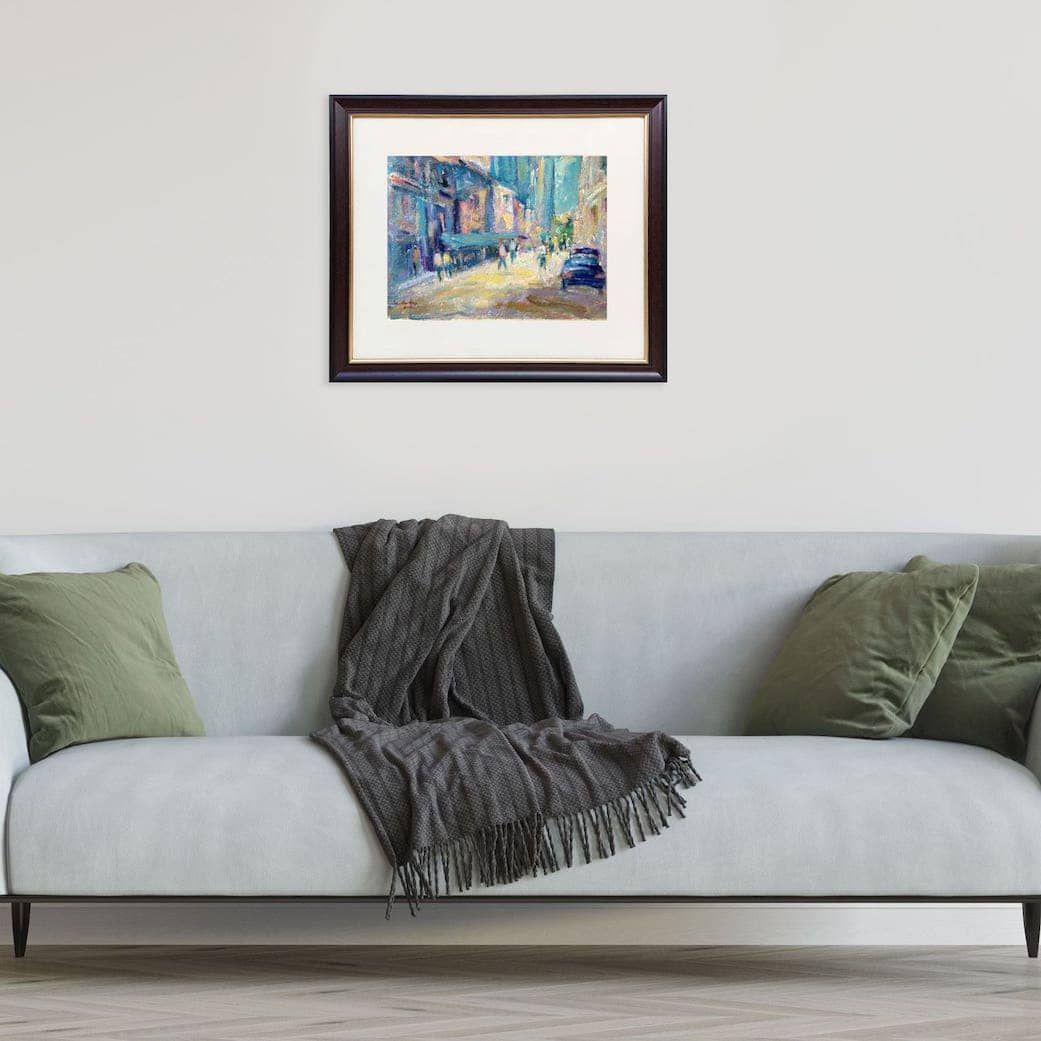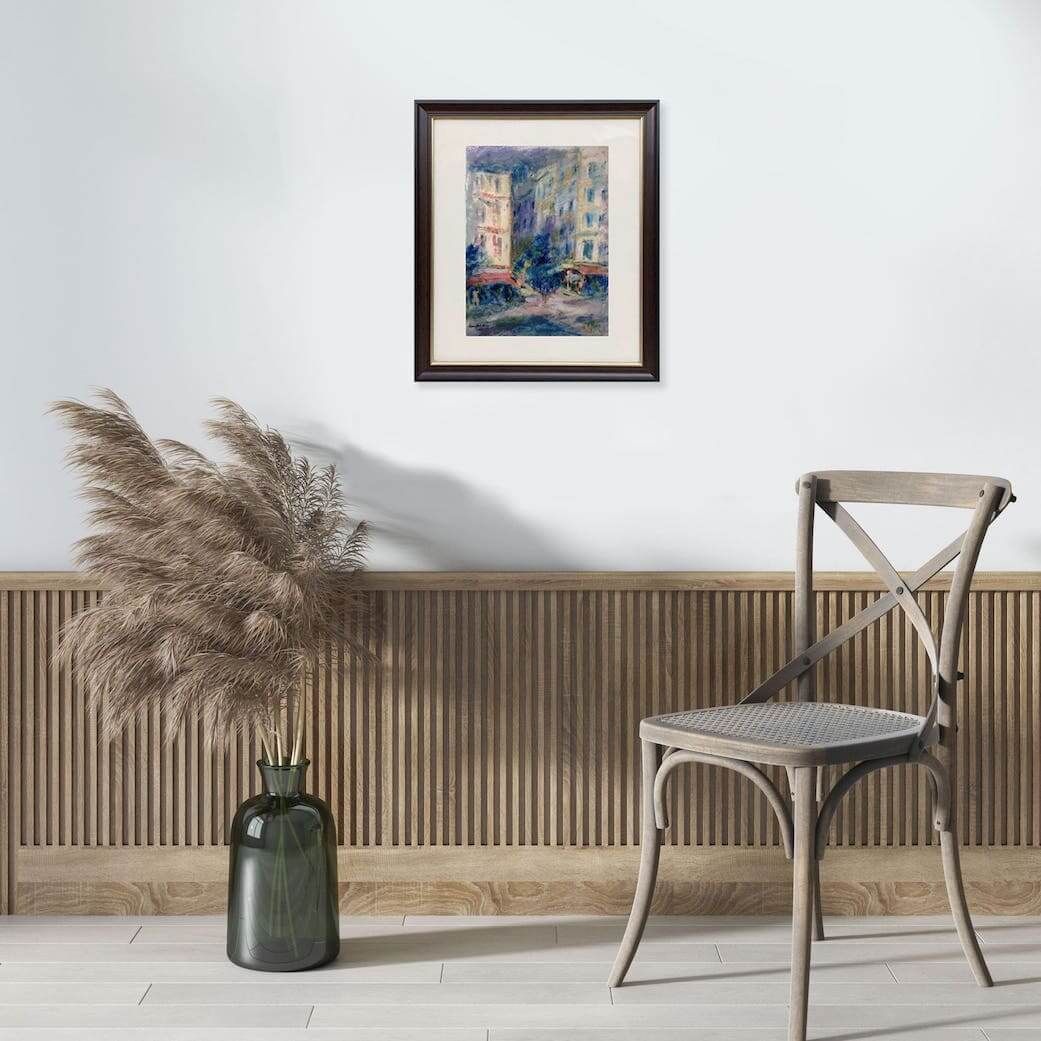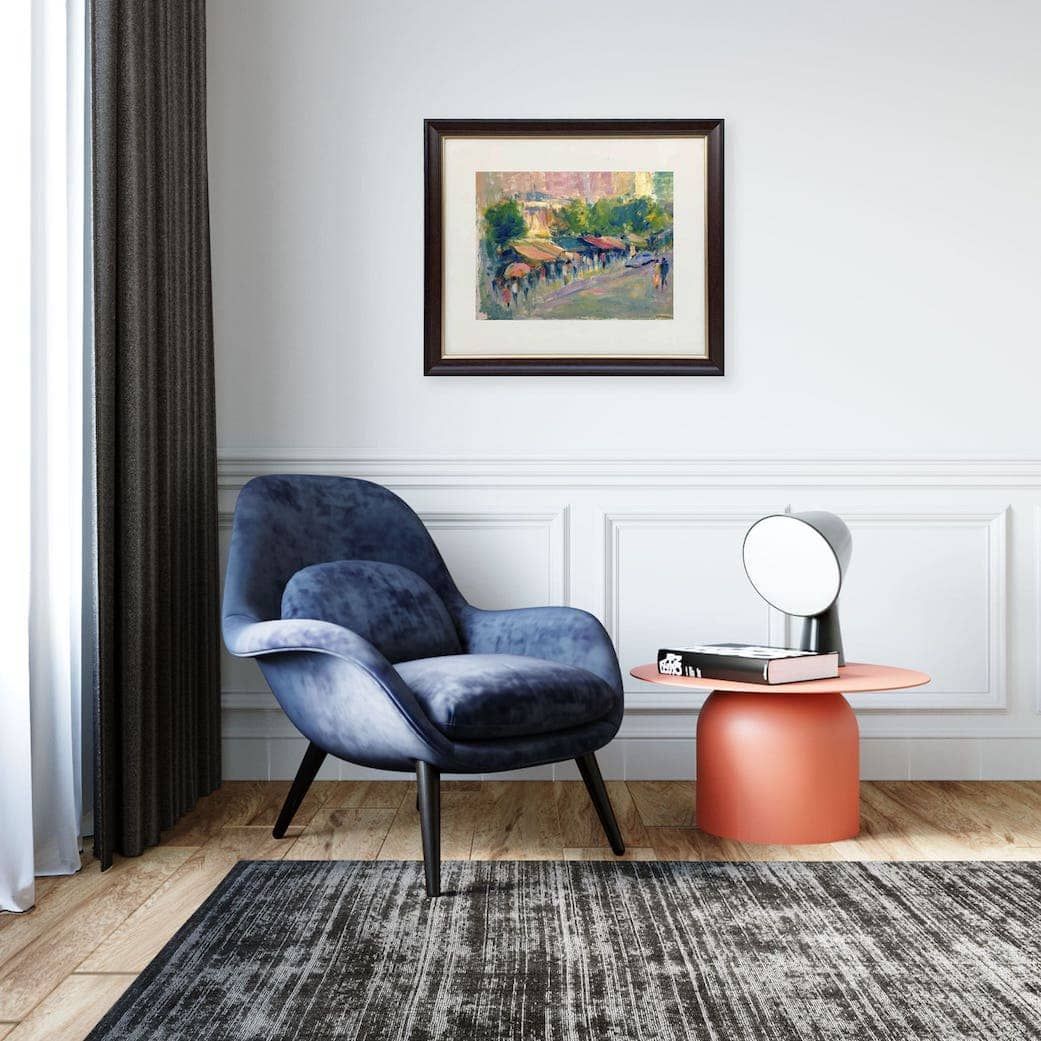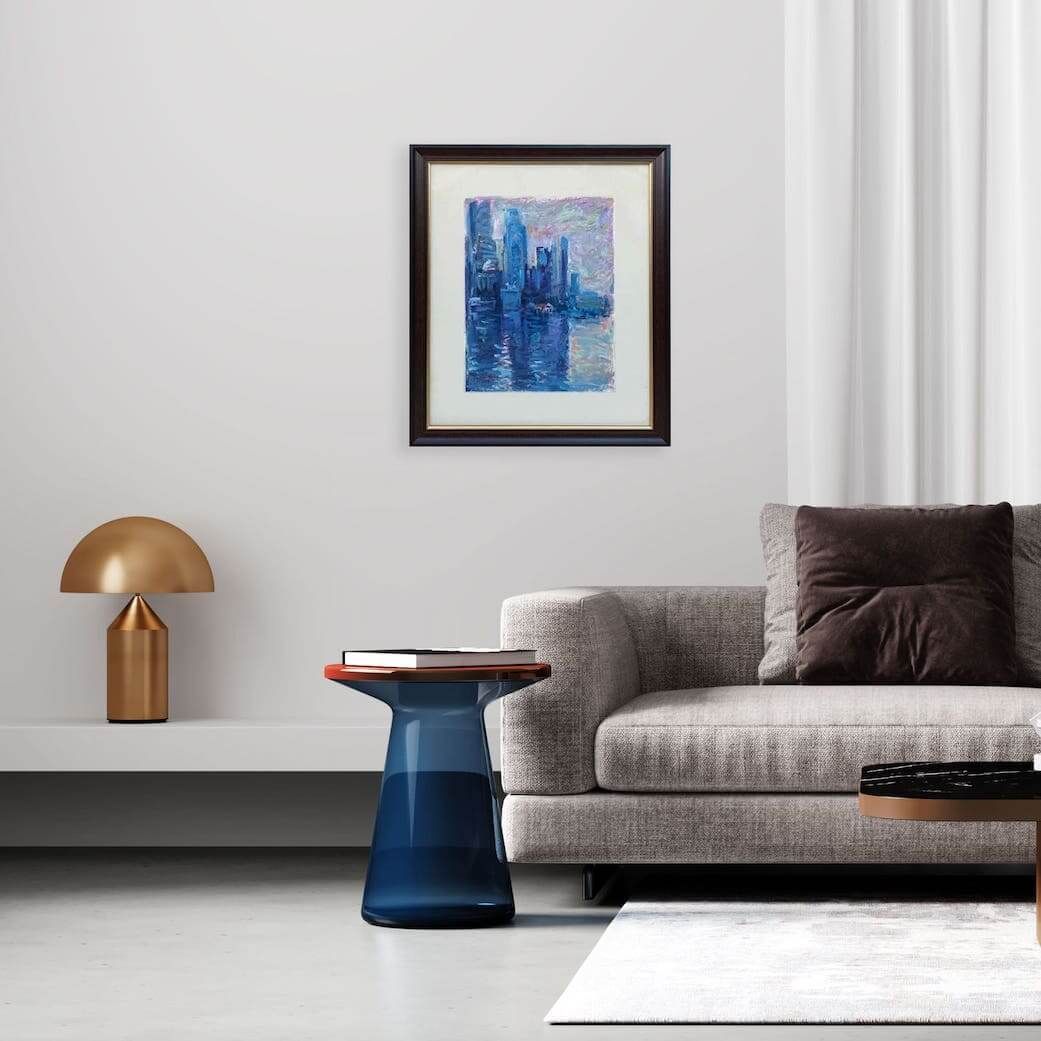How to Decorate Specific Rooms with Art
How to Decorate Specific Rooms with Art: Tailoring Your Masterpiece
Now for the fun part – let us take a room-by-room approach so you can get inspired no matter where you are looking to decorate.
Each room in your home serves a different purpose, and the art you choose can enhance its function and mood.
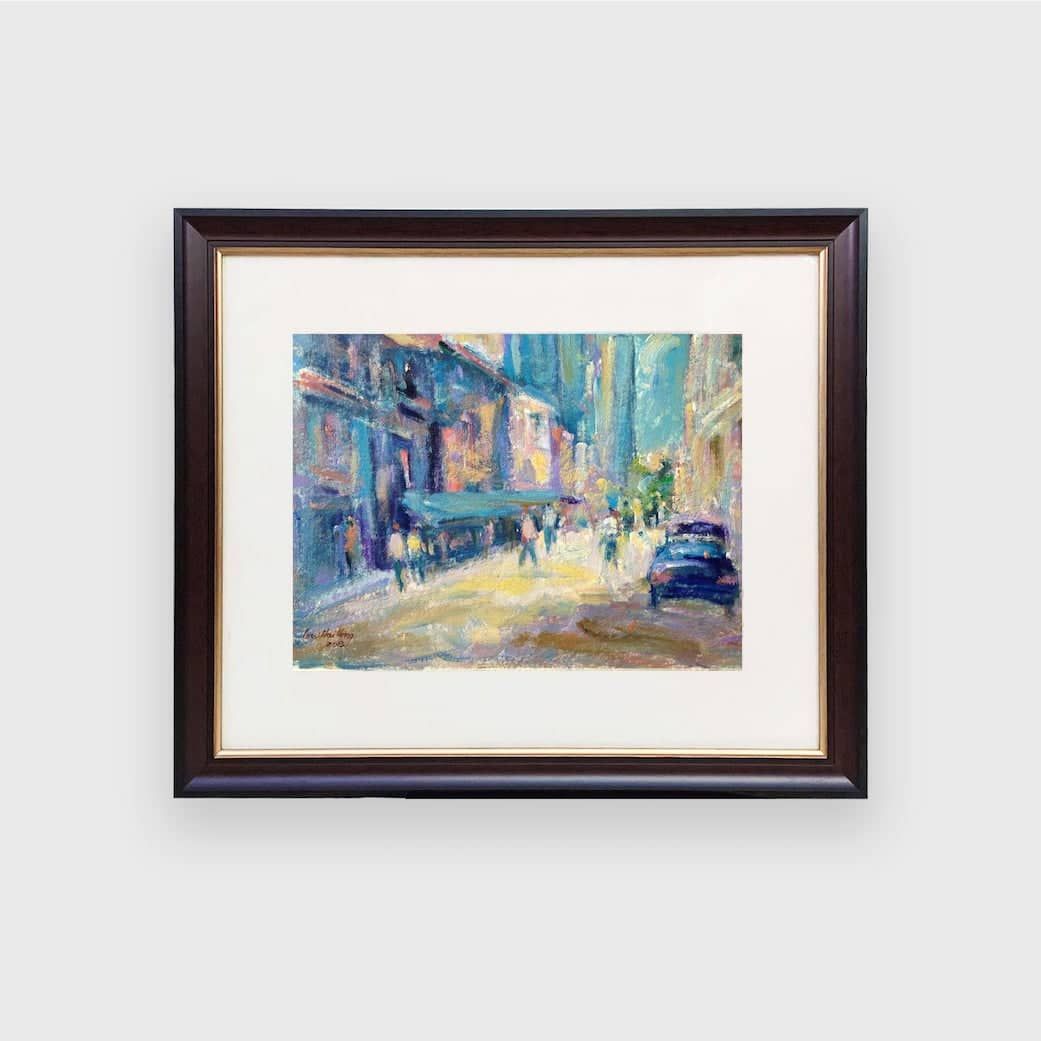
Living Room Art: The Heart of Your Home
The living room is often the central hub for gathering and relaxation, making living room art decoration crucial.
Setting the Mood
Do you want a lively, vibrant space for entertaining, or a calm, serene sanctuary? Let the art reflect that desired atmosphere.
Possible Locations
A large piece or a well-arranged gallery wall (with a mix of art styles and sizes adding character and warmth) as a focal point above the sofa can anchor the entire seating area.
On the fireplace mantel is another perfect spot for a rotating display of smaller artworks, framed photos, or sculptural pieces.
Alternatively, lean a few smaller framed prints against the wall on a console table for a casual, layered look or consider incorporating functional art, like a decorative clock or a stylish bookshelf that also serves as a display for smaller art pieces.
Pro Tip
Match your art's tone with your vibe—vibrant and bold for energy, muted and soft for relaxation.
Dining Area Art: Setting the Scene for Meals
Dining area art decoration can set the tone for meals and conversations.
Setting the Mood
Some believe certain colours (like red or orange) can stimulate appetite, while calming blues might create a more relaxed dining experience.
Choose art that sets the mood for dining. Warm colours or abstract pieces can create a cozy atmosphere.
Possible Locations
If you have a dedicated dining area, a bold statement piece on a feature wall can be a focal point.
Alternatively, a long, horizontal piece or a symmetrical arrangement of two or three pieces can work beautifully.
Hang decorative plates or food-themed art to enhance the dining experience and add a unique touch.
Pro Tip
Art here should be a conversation starter—interesting but not overpowering.
Stairwell Art: An Unfolding Narrative
The stairwell is often overlooked, but it is a fantastic canvas for a sequential display.
Stairwell art decoration can create a journey as you ascend or descend.
Important Safety Considerations
Ensure art is securely hung and not easily bumped in a high-traffic area.
Possible Locations
Utilise the vertical space in your stairwell by creating an ascending gallery wall that follows the incline of the stairs.
This is perfect for showcasing a family photo collection, a series of prints, or diverse pieces that tell a story.
Alternatively, consider using mirrors to reflect light and create the illusion of more space.
A large mirror can also serve as a stunning art piece. If you have landings, these are great spots for a larger, impactful piece.
Pro Tip
Use consistent framing or themes for a polished look as you move through the space.
Study Room or Home Office Art: Inspiration and Focus
Your study or home office should be a place of inspiration and concentration.
Study room art decoration can reflect your interests and boost productivity.
Setting the Mood
Opt for calming colours and serene landscapes to create a peaceful environment conducive to focus and creativity.
Choose motivational or abstract art pieces that inspire creativity or provide a calming backdrop for focus.
If you are a global thinker, maps or travel-themed art like cityscapes can be fitting.
Alternatively, showcase art related to your hobbies, passions, or field of work.
Additionally, create an inspiration board with a mix of art, quotes, and personal mementos to keep you motivated while you work.
Eye-Level Comfort
Position art so it is easily viewable and does not strain your eyes during long work sessions.
Pro Tip
Place art within your eye level to give your brain a refreshing visual break.
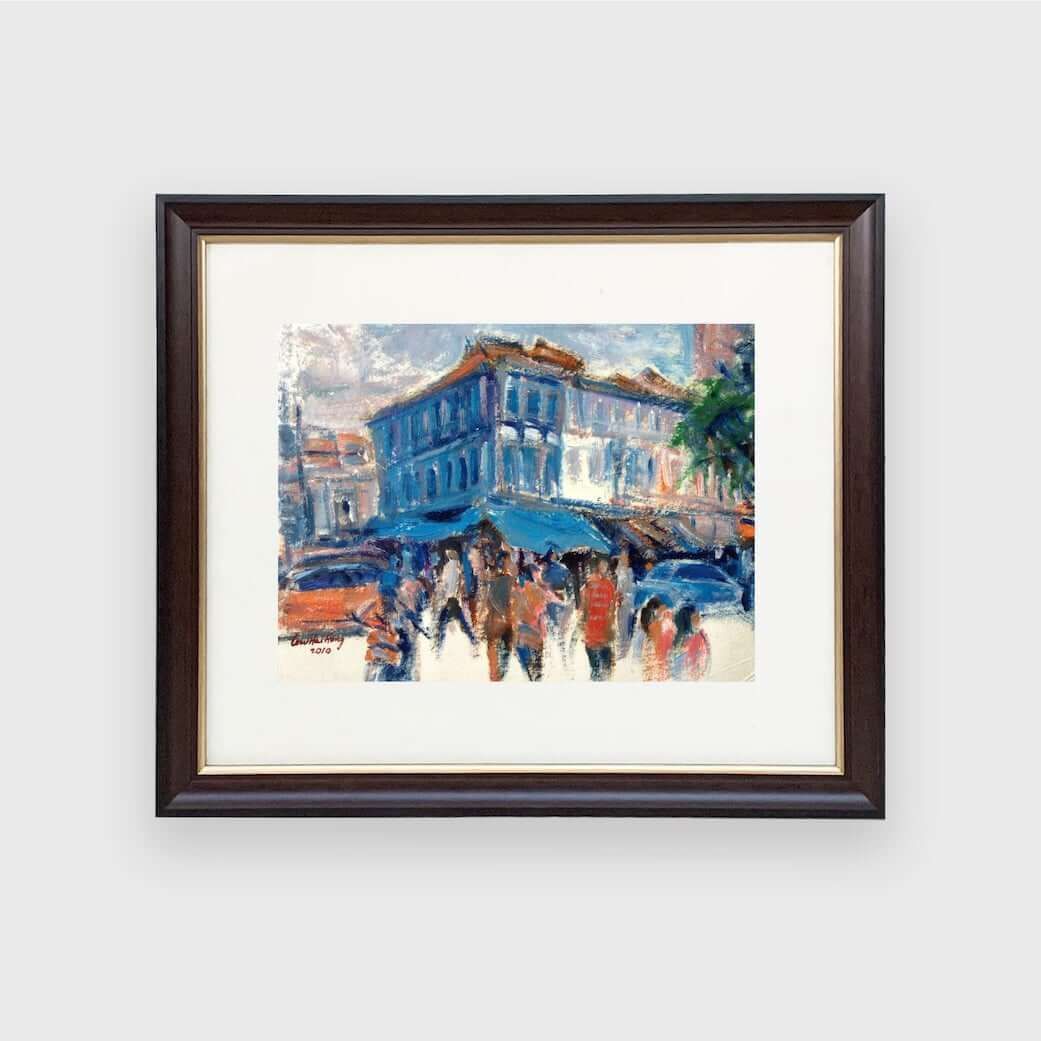
Master Bedroom Art: Your Personal Sanctuary
The master bedroom is your private retreat, so master bedroom art decoration should evoke tranquillity and personal style.
Make Intentional Choices
Choose art that reflects your personal style and interests.
This could be a romantic piece or something that evokes happy memories.
Opt for art with soothing palettes, nature scenes, or abstract pieces that promote relaxation.
Keep the art peaceful and not too busy to maintain a restful atmosphere.
Possible Locations
One large piece or a triptych above the headboard can create a serene backdrop.
Alternatively, hang matching pieces on either side of the bed for a balanced look, or create a cohesive gallery wall that ties in with your bedding.
Additionally, framed photos of loved ones or cherished memories can add a deeply personal touch.
Pro Tip
Hang art above the headboard, keeping the palette soothing and the composition balanced.
Bedrooms Art: Versatility and Individuality
For guest bedrooms, children’s bedrooms, or teen bedrooms, bedroom art decoration offers a chance for more specific themes.
Key Considerations
Choose calming art pieces that promote relaxation, like serene landscapes or abstract designs in soft colours.
Encourage personal expression by allowing family members to choose their favourite pieces for their own bedrooms.
Guest Bedrooms
Think welcoming and calming. Art that is simple, universally appealing or with local scenes can be nice for visitors.
Neutral tones and gentle themes make guests feel welcome and at ease.
Children's Bedrooms
Select playful and colourful art that sparks imagination. Whimsical, colourful, and age-appropriate art is key.
This is where you can truly have fun with imaginative themes, animal illustrations, or educational art.
Consider incorporating chalkboard paint or removable decals that allow children to engage with the art in their space.
Choose pieces that can grow with them or be easily swapped out regularly to reflect their interests.
Teen Bedrooms
Let them express themselves!
Bold graphics, pop art, music-themed art, or pieces reflecting their hobbies are great choices.
